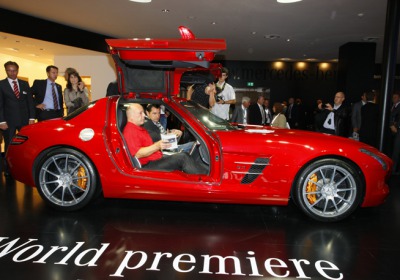The Frankfurt motor show 2009 review, by Ben Oliver
Wed, 16 Sep 2009By Ben Oliver
Motor Shows
16 September 2009 00:01
Taking the metro to the Frankfurt motor show, I was surrounded by men whose grey suits, lapel badges and reading matter made it obvious they were car company execs heading the same way. In previous years they probably had access to the fleets of chauffeur-driven cars that used to clog the town as they shuttled from airport to exhibition hall to hotel. But Frankfurt, like every other motor show, finds itself in reduced circumstances this year.
The Paris and Frankurt shows alternate, and the comparison with Paris this time last year is instructive. Back then, in the French capital in 2008, they might still have had the limos, but there was a sense of impending doom as Europe’s car industry realised the economic contagion was fast rolling across the Atlantic. This year, the limos have gone but a little of the hope has come back; this lot just look happy to have a show – and jobs – to go to.
What has happened in between has more than lived up to that sense of dread in Paris; a perfect storm which has seen, among so many other extraordinary events, what was once the world’s biggest car company pass into and out of bankruptcy.
Frankfurt 2009: optimism or just opt out?
So is the Frankfurt show full of post-crunch cars? No: the car industry doesn’t move that fast. The effects are there though, but chiefly in what you don’t see. Cars – concept and production – have been cancelled, and companies including Nissan and Honda have stayed away. The British motor show might have been an optional extra for car makers, but missing Frankfurt (the world’s biggest motor show in Europe’s biggest market) was once unthinkable.
It’s also there in relative size and placement of the stands: bankrupt Chrysler and Jeep were in with its putative saviour Fiat but with a stand no bigger than mad Swiss tuners Mansory, while Chevrolet was reduced to a marquee in the street outside. BMW and Mercedes bravely still had whole halls to themselves, but at Merc, the Maybach was tucked away apologetically in the very far corner.
Sparking new ideas
The theme of the show was undoubtedly electric, even if the atmosphere wasn’t. But again, this isn’t a post-crunch theme; the slump has just accelerated a trend begun by the EU’s carbon dioxide regulations and the fact that nobody knows what’s going to happen to the supply or price of oil.
Some of Frankfurt’s new electric cars left us a little cynical; claiming your concept will drive 1000 miles on a five-minute charge is fine if it will never turn a wheel. But that also makes it easy to spot the companies making the running; Renault lined up four electric concepts – with the Twizy the maddest of the lot – but, crucially, are building the first next year.
Frankfurt motor show 2009: the future
And that faint sense of hope? It came partly from the fact that some things don’t change; the Italian cars were still surrounded by very pretty girls wearing not very much, the same teams of Chinese engineers were busy photographing obscure parts of the latest cars, and the extraordinarily tall man who comes every year was still attempting to lever himself into superminis [note from ed – this is neither Georg Kacher nor Ben Pulman; rather a non-identified European journo often spotted on the motor show scene]
But more importantly, hope was there in the fact that there are still some car makers prepared to fund mad, idle-doodle concept cars, most noticeably from Peugeot-Citroen with their BB1 and Revolte. And most importantly in the fact that the best cars were all small, and often a bit weird. The one I most wanted to drive off the stand was VW’s latest 1-litre concept.
The industry seems to be rediscovering the pleasures of simplicity and leftfield engineering. It shows they’re still thinking, still planning, still investing: that the current crisis might not mean there’ll be a dearth of interesting cars we can actually drive at Frankfurt in 2011 and 2013.
By Ben Oliver

